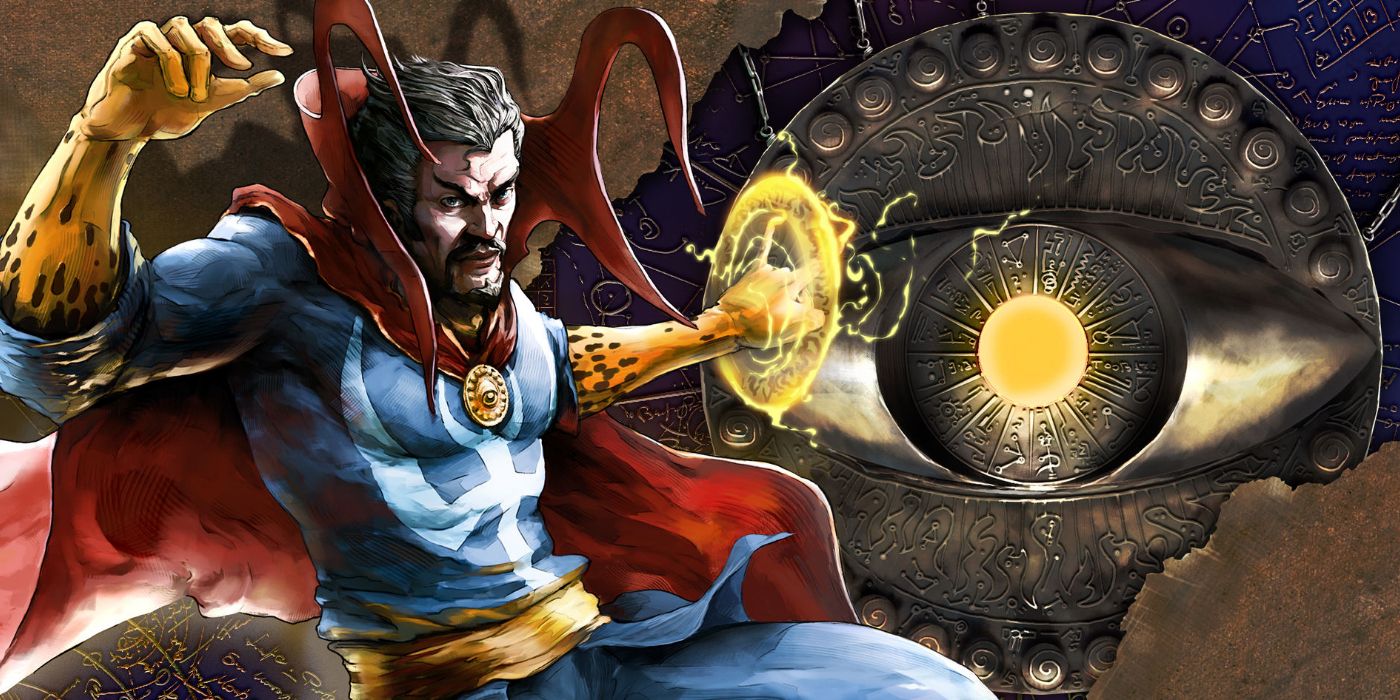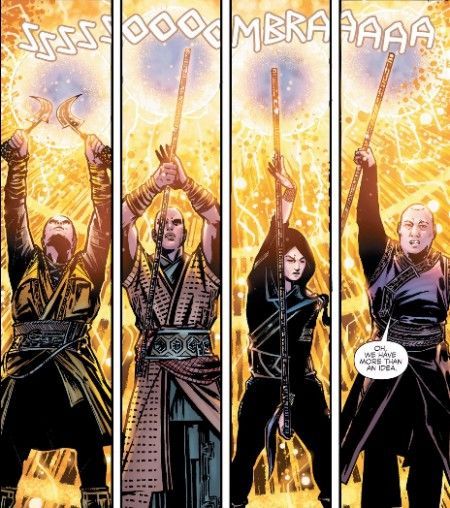As the Marvel Cinematic Universe continues to broaden its horizons – and its roster of intellectual properties – in order to appeal to as wide a chunk of the general movie-going audience as possible, Marvel Studios has been angling to include several different sub-genres or niches: Guardians of the Galaxy was a light-hearted space-opera romp, while Ant-Man was a comedic heist picture.
Next comes Doctor Strange, the MCU’s first inclusion of magic and mysticism (on the film side, at least; on the television front, Daredevil has been doing a good job of slowly layering in supernatural elements across its two seasons).
The Doctor Strange prequel comic book miniseries jumps into this realm of fantasy full-force-ahead (H/T Comic Book Resources). A mysterious woman has stolen the Eye of Agamotto, which has been described by Marvel as a “powerful, ancient relic,” from the British Museum (this magical device just may be able to manipulate time, which is why we think it may be the Time Stone, one of the six Infinity Stones scattered all throughout the Marvel cosmos). The Masters of the Mystic Arts – including Kaecilius, the enigmatic character that Mads Mikkelsen is playing – are convened to track her down and reclaim the Eye. They successfully manage to do so by the end of the first issue, placing it safely within the Sanctum Sanctorum, which will eventually become Doctor Strange’s base of operations.
This prequel comic is notable on several fronts, starting with its introduction of Mads Mikkelsen’s characters and ending with its revelation that another individual had originally acquired – and, apparently, abused – the power of the mystic arts, causing Dr. Stephen Strange to be chosen next.
But perhaps what’s most noteworthy is its head-on embracing of magic, which may come as a rather abrupt transition for most MCU fans; the shared world that began with the rather grounded Iron Man has, thus far, left very little room open for the supernatural (even Thor and his Asgardians were reimagined as an alien civilization that ancient man worshipped as divine, rather than taking the traditional Marvel Comics tack of featuring fully magical beings). While this works to help set up Doctor Strange’s plot, it leaves no room for thematic hand-holding.
Then again, the Marvel Cinematic Universe has been peppering its last several releases with a few clues to help reorient viewers to this new (literal) reality, from Captain America: The Winter Soldier’s first name-dropping of Stephen Strange to the introduction of the quantum realm in Ant-Man, which just may end up providing the bulk of this new film’s mystical elements. And, odds are, most viewers who will find themselves in the movie theater will care more for an exciting new two-hour adventure and less about any type of continuity or tonal nitpicks across the eight-year meta-franchise.
Captain America: Civil War is in theaters now. Doctor Strange opens November 4, 2016; Guardians of the Galaxy Vol. 2 – May 5, 2017; Spider-Man: Homecoming – July 7, 2017; Thor: Ragnarok – November 3, 2017;Black Panther – February 16, 2018; Avengers: Infinity War Part 1 – May 4, 2018; Ant-Man and the Wasp – July 6, 2018; Captain Marvel– March 8, 2019; Avengers: Infinity War Part 2– May 3, 2019; and as-yet untitled Marvel movies on July 12, 2019, and on May 1, July 10, and November 6 in 2020.
Source: CBR


